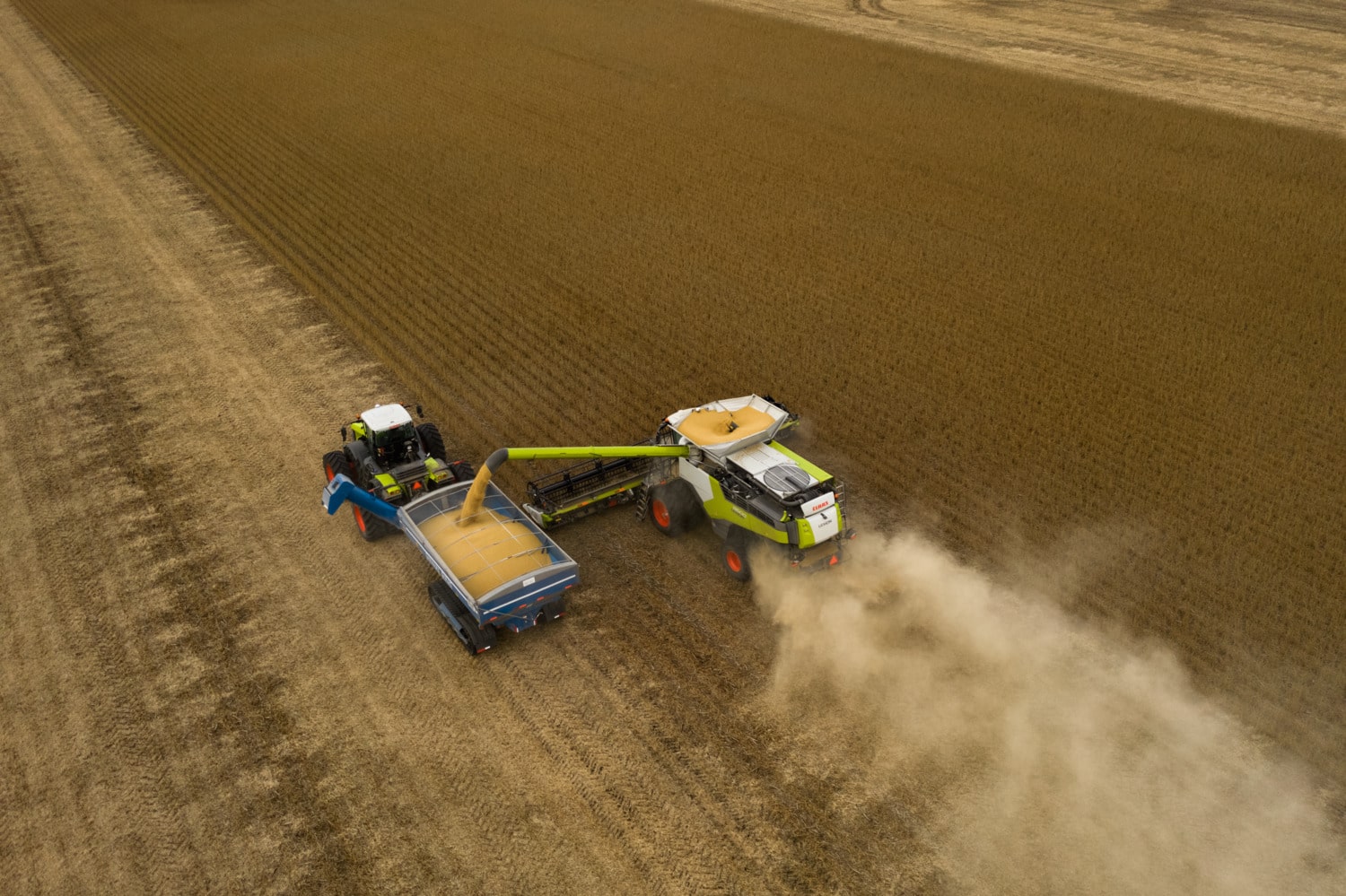Hey everybody, I hope you’ve had a successful harvest season. Things went well on our farm this year despite having drought like conditions throughout the growing season. Corn yields were not where we wanted them to be, but soybean yields really amazed us that they were still on par with averages that we have seen over the last couple of years. The good thing with both of our crops this year is that our cost of production is so low that even with subpar yields and poor weather conditions, we are still monetarily resilient and profitable.
We wanted to share updates about our fourth year using relay cropping. I think relay cropping is going to be an important tool for more farms in the future because we need to diversify our cropping systems. Cover crops are going to continue to be an increasing trend, and because the seed is not currently available today farmers need additional ways to make cover crops pay and to be more creative to drive the profitability of their family farms. Today, local cover crop prices are at an all time high. The last that I had heard a bushel of cereal rye was going for more than $17.50, which is a drastic increase from what we have seen over the last couple of years and absolutely a barrier to increased adoption of cover crop acreage. One of the solutions I believe is relay cropping. Relay cropping is similar to double cropping, except that the soybean crop is planted into the living cereal grain. On our farm, we’ve done this for four years, where our system is to harvest corn in the fall, then directly after harvest plan cereal rye, typically around 60 lbs/ac. The cereal rye over winters like a typical cover crop, then we plant our soybeans into the rye in late April or early May like we typically would. However, instead of terminating our cover crop, we take it all the way to harvest which we harvest over top of the growing soybeans in mid-July. Using this system, we are able to monetize the cereal rye, grow our own cover crop seed, and maximize our soil health gains that the cereal rye growing with the leguminous soybeans have on our soils.
A trick that we found to ensure profitability in this program is to plant ultra full season soybeans. We’ve used anything from a 3.1 maturity all the way up to now this year using 4.0 maturity. We’ve found that to be successful relay cropping in our area (southeast Iowa), we need at least a 3.6 maturity or longer. The key with the full season maturity is that in relay cropping we are playing with the photo period, and soybeans are sensitive to that day length. We need to be mindful of that to ensure the optimum yield on the soybeans. This year, the cereal rye results were pretty good, we used Elbon cereal rye this year for the first time. It yielded about 30bu/ac, and our soybeans were able to maintain a yield of mid to upper 50’s in terms of yield per acre. This year for the first time we did experience a slight yield drag in the relay crop soybeans vs. our normal soybeans, which yielded on average about 60-70bu/ac. This drop in potential soybean revenue is disappointing and we are striving to maintain equal soybean yield in the relay crop vs. non relay crop system, but with the ultra dry season this year the soybean yield was set back because of the competition. However, the key factor to drive our family farm is bottom line profitability, which we noted to be at least an extra $200/ac in the relay crop system vs. in our typical soybeans into cover crop program.
In the future we absolutely look to continue to scale our relay cropping efforts. This year we relayed cropped about 35 acres, and next year we are planning on over 100 acres, potentially150 or more even of our operation. We know that there is a demand for the cereal rye, we know that we could be more profitable growing the relay crop even in poor weather conditions, and we’re amazed at the soil health and organic nitrogen gains that we are generating as part of a multi-year soil health building program. Relay cropping can cause risk for your operation and not all of the farmers utilizing relay cropping have had the success that we’ve had on our operation. If you want to try relay cropping, I suggest starting small, using ultra full season soybeans and planting the soybeans early into relatively light rates of cereal rye. For more information, hit me up at my email listed below, I’m happy to discuss this further as relay cropping continues to be one of the most exciting things that we have been playing with on our farm.

Mitchell Hora
Founder & CEO // Continuum Ag
mitchell@continuum.ag
continuum.ag
